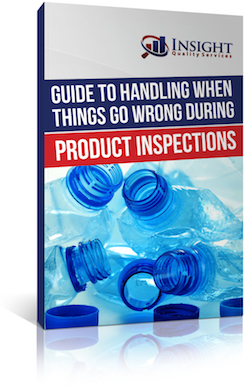Encountering unexpected problems in your business is inevitable. No matter how well prepared your organization is, there’s no avoiding the challenges of a tumultuous world and a human workforce. And when faced with these setbacks, it’s crucial to have a plan in place to manage them.
Developing a CAPA program at your business is an essential strategy to make sure problems are well-handled in the moment and corrected in the future. In this article, we’ll explore what a CAPA is, why it’s important, and the ways you can implement a CAPA plan in your workplace.
Table of Contents
What is a CAPA in Quality Management?

A CAPA (Corrective Action/Preventative Action) is a process within your quality management plan wherein problems are identified, investigated, and corrected, with a focus on pinpointing and eliminating the root causes.
The fundamental goal of CAPA is to ensure the same problem doesn’t crop up again. By making a plan and pursuing both corrective (reactive) and preventative (proactive) improvements, your CAPA encourages continuous refinement of product and process quality.
A CAPA can be boiled down into two essential questions. When you encounter a problem, you must ask:
- What are we going to do to fix it?
- What are we going to do to keep it from happening again?
Why is a CAPA Important?

A CAPA is an important quality control process for all businesses — but particularly for manufacturing businesses. Say you have a product order that fails inspection because a product measurement is slightly off. First, you must figure out what to do in the moment by taking corrective action. Will you cancel the defective order, correct the issue, or accept the product at a discount?
Once this decision is made, it’s equally important to identify the root cause of the failure and take preventative action to ensure it doesn’t happen again. A CAPA process defines how you will handle the issue in the moment and stop it from happening in the future.
US FDA Requirement 21 CFR 820.100
Manufacturers of medical devices are required to comply with FDA 21 CFR 820.100. This requires them to include CAPA in their Quality Management System. These FDA requirements can be helpful guideposts even for businesses or manufacturers who are not required to adhere to them.
How to Implement a CAPA Program (5 Steps)

There are many different CAPA systems and guidelines which work well for different businesses. Most CAPA plans will include this approximate process:
1) Detection
The first step in a CAPA process kicks off when a problem is identified. You will document this issue and perform a risk analysis. High-risk issues should be treated with particular care and urgency.
2) Identifying the Root Cause
Next, your quality management team will investigate and identify the root cause of the problem. If you have proper traceability measures in place, it should be fairly easy to track your manufacturing process from start to finish and pinpoint where the issue stemmed from.
3) Corrective Action
Corrective Action (CA) will address the problem you’ve discovered in the moment. Whether you need to reject a shipment, ask for repairs on a minor error, or anything in between, you will take whatever action is needed to resolve the issue.
4) Preventative Action
Preventative Action (PA) will hone in on and correct the root cause you’ve uncovered. In short, PA means you’ll change some part of your process to ensure this issue will not come up again. You’ll also document these adjustments for future reference.
You may receive pushback from a factory when you request concrete actions to address a known issue, but it’s better to have a hard conversation now then to risk the same costly product nonconformity in the future. If a factory or supplier is not willing to communicate or address your issues, it may be time to switch manufacturers.
Regular supplier audits and quality inspections are smart preventative measures that maintain high product quality.
5) Evaluation of Effectiveness
Lastly, evaluate how effective your corrective and preventive actions were. Was the issue resolved? Does it appear to be resolved for the foreseeable future? It’s also important to check that these preventative measures haven’t created new issues anywhere else.
Insight Quality Services Helps You Manage Product Quality

Contact Insight to schedule a consultation for product inspection services or factory audit services that can help support your CAPA program today, or download our free guide on what to do when things go wrong during product inspections.
Free Guide: What to do When Things Go Wrong
When a quality problem happens - and they will - how you approach the problem makes all the difference in successfully squelching it.
Learn how to deal with the problem at hand, see potential quality gaps throughout your supply chain, and take proactive measures to avoid future problems.





0 Comments